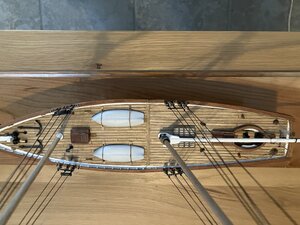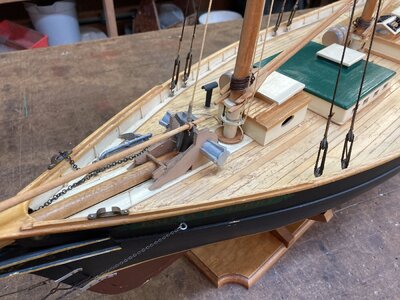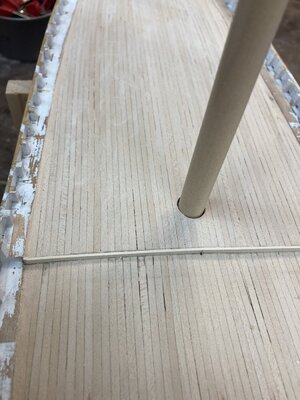Hello! I am a new modeller working my way through the Occre Santisima Trinidad. I have just finished planking the first of the 4 decks. Theres a couple problems I would love some advice for from some veterans:
1. There are some glue stains on the decks. I have been trying to sand them down, but that jsut leaves a ton of dust that clings to the deck that I have been having mixed success wiping off. How do you get all your decks to look clean and even? And if its sanding, how do you clean off all the dust after?
2. I intend to leave most of the model unpainted, especially not the decks. How do you guys protect the model? I hear polyurethane of some sort. If so--what kind of polyurethane? I want it to look realistic--like an actual ship deck, and not covered in some sort of glossy coating.
3. For the future--I intend to customize the stern to make it at least slightly more historically authentic than the awful stern plate that came with the kit and have been looking through all the build logs on here. I am sure at some point I will have so, so many more questions once I get to that stage!
Thank you!
1. There are some glue stains on the decks. I have been trying to sand them down, but that jsut leaves a ton of dust that clings to the deck that I have been having mixed success wiping off. How do you get all your decks to look clean and even? And if its sanding, how do you clean off all the dust after?
2. I intend to leave most of the model unpainted, especially not the decks. How do you guys protect the model? I hear polyurethane of some sort. If so--what kind of polyurethane? I want it to look realistic--like an actual ship deck, and not covered in some sort of glossy coating.
3. For the future--I intend to customize the stern to make it at least slightly more historically authentic than the awful stern plate that came with the kit and have been looking through all the build logs on here. I am sure at some point I will have so, so many more questions once I get to that stage!
Thank you!













